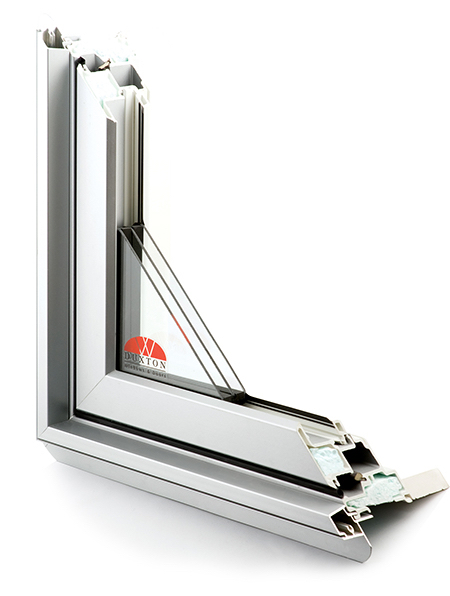
Image Credit: Duxton Windows
Editor’s note: Kent Earle and his wife, Darcie, write a blog called Blue Heron EcoHaus, documenting their journey “from urbanites to ruralites” and the construction of a superinsulated house on the Canadian prairies. Their previous blog on GBA was called How Small Can We Go? The blog below was originally published in May 2015.
One of the things I am most excited about in our house are the windows. We have a lot of windows in the house: 25, to be exact. And they are not terribly small.
Even before I knew anything about energy-efficient building, I’d always loved homes with large expansive windows overlooking a beautiful view. However, when building an extremely energy-efficient home, the placement, size, glazing, window-to-floor ratio, and type of window matter a lot.
First, and perhaps most important, is which direction your windows should face. Obviously in the northern hemisphere, the sun is in the south. Therefore, the majority of your windows should face south and be able to take in the sunlight through the winter months when the sun is lower in the sky to provide some passive heating. Conveniently the sun is higher in the sky in the summer, so as long as you have properly sized overhangs or shading in the summer, you can prevent overheating.
Recently we were in a neighbor’s house that was not designed with energy efficiency in mind. They have large south windows that are completely exposed, as well as some larger east- and west-facing ones. Even though they would (theoretically) have a great view, they had the interior blinds drawn on almost all of the windows! Interior blinds and shading do very little to prevent overheating as the light and heat have already entered the space. The sun will simply heat the blinds and radiate inside anyway.
On the north side, just two windows
For us, we maximized the size of our south-facing windows (up to a point, as you can still overheat in the winter — even at -40°F). And we minimized the size of our northern, eastern, and western windows. Fortunately for us, our best views are to the south and east. We do have a couple of large windows on the east side of the house to take advantage of the river valley view and to provide an unobstructed view of the sunrise. (It would be foolish not to put windows there.)
We would have liked to have put more windows facing east, but in order to do so we would have required shutters on the exterior, thus obstructing the view anyway. Shutters are really the only way to “shade” light from the east and west as the sun is too low in the sky throughout the year (at sunrise and sunset) to actually “shade” it. To the north we don’t have much of a view, and so we only have two windows in that direction: one in a bedroom for ventilation and fire safety, and the other in the hall for ventilation. Northern windows really don’t provide any energy benefit; they are actually an energy penalty.
As for glazings, the available options are really amazing. The right type of glazing can help with heat gain or can help block unwanted heat. Coatings designed to lower the solar heat gain coefficient (SHGC) do not block the view at all; I think of these coatings as similar to sunscreen.
On the east and west windows, you want more sunscreen because you don’t want to overheat. On the south you want minimal sunscreen because you want that good passive heating in the winter (as long as you provide passive shading in the summer).
No “crazy” German windows
OK, so what type of window frames do you buy? Wood, PVC, or fiberglass?
We had really hoped that we would be able to afford fiberglass windows. These are simply the best for energy efficiency, durability, and quality. The frames themselves are made of 60% glass (fiberglass), and so the frames move (expand and contract) in response to temperature changes at the same rate as the glazing. Consider -40°F outside and 68°F inside. That is a 108 F° change across a 1-inch space. PVC and wood will flex and bend (and expand and contract) at a different rate than the glass, leading to more air leakage and eventual failure of the window over time. Fiberglass however does not have the same issues. The Duxton Windows web site has some excellent information on the advantages of fiberglass frames.
Now that we had an idea of what we wanted, we needed to determine which supplier to go with. We priced windows from Duxton (fiberglass), Accurate Dorwin (fiberglass), and Plygem (PVC/wood). We did not consider any of the crazy German imported windows. Shockingly, people actually do this. (This is where the economics of the Passivhaus approach and extreme energy efficiency clash with reality and sustainability, as I’ve written about before).
I was actually talking to a house designer the other day who was raving about some German windows they’d started to import. Indeed, they are impressive windows — but they’re coming from fricking Germany!
When building a “sustainable” home, my thought is that we should really be considering if we are spending our money wisely or if it could have a better effect elsewhere. (For example, is it better to spend $15,000 more on windows to get a marginal energy improvement or to spend $15,000 for solar panels?) And if you are importing your high-performance windows from 4,000 miles away, shipping them on a cargo ship across the ocean, is that sustainable?!
Anyway, I knew that the fiberglass windows would be more expensive than PVC/wood — but the question was, how much more? When we received the quotes, I was pleased to see that the fiberglass windows came in only 20% more expensive than PVC. For the added efficiency, durability, warranty, and the larger viewing area of the window (fiberglass is stronger therefore can have a smaller frame and more glass), it was a no-brainer to go with fiberglass.
And now, the fine print
We ended up choosing Duxton over Accurate Dorwin, due simply to the fact that our designer had recommended them. The price difference between the two companies was marginal.
These are the specs (U-factors are for the whole unit, not just the glazing):
- Fixed windows, south: U-factor, 0.16; solar heat gain coefficient (SHGC), 0.56.
- Casement windows, south: U-factor, 0.18; SHGC, 0.56.
- Fixed windows, east, west and north: U-factor, 0.15; SHGC, 0.35.
- Casement windows east, west, and north: U-factor, 0.18; SHGC, 0.35.
One last thought from Christopher Alexander
In designing the house and choosing the windows, I tend to think about the words of Christopher Alexander (one of the authors of A Pattern Language), who said, “Light on two sides of every room.”
I loved reading this book because it was all about aesthetics. Written in the 1970s, the book did not give a crap about energy efficiency. It was a nice reality check against all of the energy efficiency dogma that in some cases can really get out of control. You still need a home that you actually want to spend time in.
Weekly Newsletter
Get building science and energy efficiency advice, plus special offers, in your inbox.





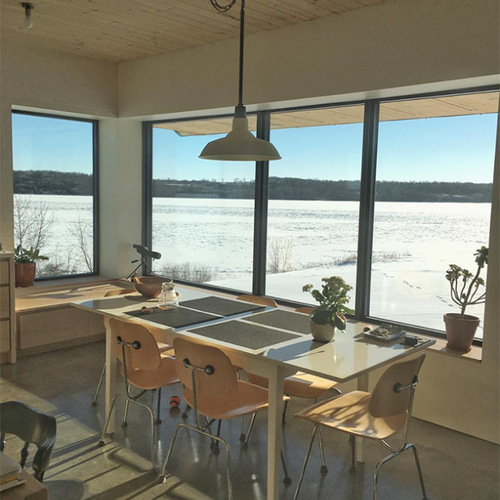
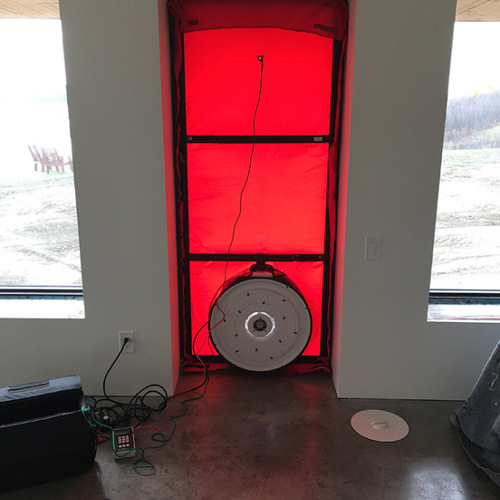
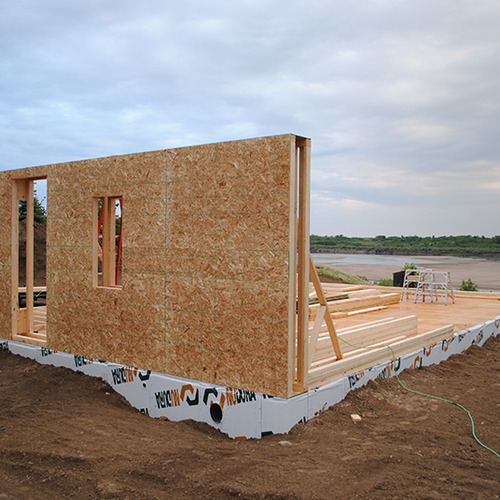
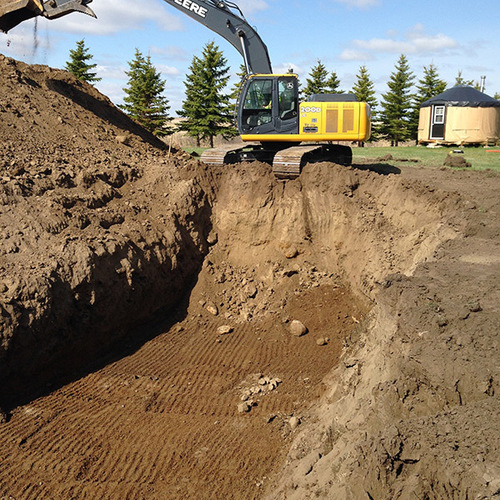






6 Comments
shipping on ships is sustainable
A minor quibble: moving bulky items like windows 4000 miles on a ship, inside a shipping container, is way cheaper, both in terms of cost and energy use, than shipping them a fraction of that distance by truck. It may be that the windows used at this house required less energy to transport, overall, than German windows might have required, but not necessarily.
Shipping and carbon footprint
Hi Stephen,
You are quite right that shipping by sea has a reduced carbon footprint as compared by shipping by truck.
The overall distance of shipping from Berlin to Saskatoon is in the neighbourhood of about 9000-10,000km. Mind you this would be a combined distance of both sea and land travel. Saskatoon is located in central Canada, so this would require some degree of travel by land (either train or truck) regardless, from the shipping ports likely of St-John's or Montreal area to Saskatoon which is about 5500km and 3000km, respectively.
From Winnipeg to Saskatoon the distance is 815km which was done by truck.
Even if we assume the most efficient possible transport vehicles for the German windows and the maximum distance of travel by sea and shortest by land (Montreal), the amount of CO2 emissions in grams from Germany would be a minimum of:
60,000grams CO2 by ship (most efficient)
180,000gram CO2 by truck (most efficient)
Comparatively, if we assume trucking from Winnipeg to Saskatoon, the amount of CO2 emissions in grams would be:
48,900 grams CO2 by truck (most efficient)
So at best from Germany is would be 240,000 grams of CO2 emissions versus 48,900 grams of CO2 emissions from Winnipeg. Even if we doubled the inefficiency of the trucking company from Winnipeg it would still be quite a lot less than shipping from Germany. (Reference: http://timeforchange.org/co2-emissions-shipping-goods).
As for financial cost, I cannot comment on a comparison.
Transportation options
Would shipping by dogsled from Winnipeg be even more planet friendly? Another benefit to living in the frozen north :-)
We ended up with crazy Lithuanian windows. Transported all but a hundred miles or so on a ship.
On a more serious note, your house is great.
Other Window Considerations
Back in the early '80's, I raised my 'stick' bungalow, and installed a Nascor, 2' centres, sip, walls and floor (over a crawl space) on rock.
My criterion for the openings - less was best, should completely, open, and easily conform to the 'sip spacing'(fewer headers, etc.) I used, the then, state of the art - Heat Mirror. All the windows were casement or awning. The casements were, centre opening, for cleaning and to catch any air movement from 3 directions. The awnings were 2' x 2' in the kitchen and washroom - designed to be left open, when I was absent, in hot temperatures and if it rained - too small to enter/break in. They maximise the cupboard area and provide bright counter light. There was another 2' x 4' awning, on an opposite wall, for cross ventilation. This awning window is the same size as 2 other casements. There are 2 other 4' x4', casements with twin opening panels - center opening. Fully opened, they do not interfere with walking past, outside. There are 11 windows, 3 sizes.
The 'picture window' is a 9' wide, 3 panel, sliding patio door. When ordered, I thought that I could have it, 2/3 open, with the left and right panels, stacked behind the fixed, center panel. It is a standard, left and/or right, opening slider, on 1 track. Naughty me/sales person - for the ordering, misunderstanding!
The steel, entry doors have an upper, venting window.
It keeps cool as I have a center stair, that works as a chimney - to similar casement/awning windows, that extract air from downstairs and cross ventilate. To enter my 'big' upstairs awning, you would need to break the hinge and bring your own ladder.
I feel that I have maximised the R values ( in the '80's) - and have better ventilation than a more typical, hung/slider/fixed, setup
Integrity Triple -Glazed Windows
I read that Marvin is now making Triple Glazed windows in their Integrity fiberglass line.
Have you heard anything about how these windows perform?
We have installed their wood/fiberglass windows on many remodel projects and have been very happy with their reliability, service and ease of ordering.
Hi,
Can you tell us how you like the Duxton windows after 5 years of use?
Thanks
Andrea
Log in or create an account to post a comment.
Sign up Log in